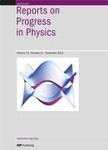版权所有:内蒙古大学图书馆 技术提供:维普资讯• 智图
内蒙古自治区呼和浩特市赛罕区大学西街235号 邮编: 010021
T=题名(书名、题名),A=作者(责任者),K=主题词,P=出版物名称,PU=出版社名称,O=机构(作者单位、学位授予单位、专利申请人),L=中图分类号,C=学科分类号,U=全部字段,Y=年(出版发行年、学位年度、标准发布年)
AND代表“并且”;OR代表“或者”;NOT代表“不包含”;(注意必须大写,运算符两边需空一格)
范例一:(K=图书馆学 OR K=情报学) AND A=范并思 AND Y=1982-2016
范例二:P=计算机应用与软件 AND (U=C++ OR U=Basic) NOT K=Visual AND Y=2011-2016

We report the discovery of cometary activity emanating from Main-belt asteroid 410590 (2008 GB140), a finding facilitated, for the first time, by an artificial intelligence (AI) assistant. The assistant, TailNet, is a prototype we designed to enhance volunteer efforts of our Citizen science project Active Asteroids, a NASA Partner program hosted on the Zooniverse platform. Our follow-up investigation revealed eight Dark Energy Camera images showing 2008 GB140 with a tail spanning UT 2023 April 23–UT 2023 July 3, when the object was inbound to perihelion. We classify 2008 GB140 as an active asteroid and a candidate Main-belt comet (MBC)—a main-belt asteroid that undergoes volatile sublimation-driven activity. Notably, 2008 GB140 is presently near perihelion, thus the object is a prime target for follow-up observations to further characterize its activity.

We report the discovery of cometary activity from minor planet 2011 UG104, which we classify as a Jupiter Family Comet (JFC). This discovery was aided by our Artificial Intelligence (AI) classification system: TailNet. JFC's, short-period comets with eccentric Jupiter-crossing orbits, originate from the Kuiper Belt and thus give us unique insight into the composition and distribution of volatiles in the outer solar system, past and present. Our AI assistant TailNet first classified 2011 UG104 as active, which was affirmed by Citizen Scientists on our NASA Partner Program Active Asteroids. Through further archival image searches our science team found evidence of activity on 2011 UG104 on three separate observations from 2021 February to 2021 April (818 < f < 95
0).

We report the discovery of cometary activity emanating from minor planet 2015 VP51 outbound from its recent perihelion passage. The activity, in the form of a diffuse tail, was first identified by volunteers of our Citizen science program Active Asteroids, a NASA Partner program hosted on the Zooniverse platform. This discovery was aided by the recently implemented TailNet artificial intelligence assistant which filters out images with a low likelihood of showing cometary activity. The tail is present in nine images of 2015 VP51 from the Dark Energy Camera and OmegaCAM between UT 2015 August 2 and UT 2015 October 18. We classify 2015 VP51 as a Jupiter-family comet based on its Tisserand parameter with respect to Jupiter TJ = 2.931.

We present the discovery of a short, diffuse tail on minor planet 2010 MK43 (alternate designation 2010 RA78)—an object previously identified as an asteroid in a cometary orbit—by volunteers of our Citizen science program Active Asteroids. Our follow-up investigation revealed eight Dark Energy Camera images showing 2010 MK43 with a tail spanning UT 2024 February 12–UT 2024 February 18 when the object was outbound from perihelion. We now classify 2010 MK43 as a Jupiter-family comet based on its Tisserand parameter with respect to Jupiter TJ = 2.888, though our dynamical simulations reveal that, due to frequent close encounters with Jupiter, 2010 MK43 was likely a quasi-Hilda within the last 10 kyr.


We report the discovery of an active asteroid, 2016 UU121, for the first time via artificial intelligence-enhanced classification, informed by our NASA Partner program Active Asteroids, a Citizen science project hosted on the Zooniverse platform. The early version of our deep neural network, TailNet, identified potential activity associated with 2016 UU121 in 40 Dark Energy Camera (DECam) images from UT 2021 September 10 to 11. The discovery was vetted and confirmed by our Active Asteroids core science team. In total, 66 DECam images of this object showed clear activity in the form of a tail. 2016 UU121 has a Tisserand parameter with respect to Jupiter of 3.161, thus we classify the object as an active asteroid. Moreover, the activity occurred near perihelion, so 2016 UU121 is also a candidate Main-belt comet.

We have detected cometary activity on minor planet 2019 OE31 through both the Active Asteroids Citizen science program and an independent archival search. Before 2013, 2019 OE31 was on a Centaur orbit, between the orbits of Jupiter and Neptune. Centaurs are objects in transition from the outer solar system to the inner solar system. They play a vital role in the understanding of the Kuiper Belt and comets. In 2013 October, following a close encounter with Jupiter, 2019 OE31 moved to an orbit entirely interior to that of Jupiter. This reduced orbital distance and, hence, increased temperature is likely the cause of the observed activity. Through a suite of orbital dynamics simulations, we find that 2019 OE31 will experience many more similar encounters and is statistically likely to return to a Centaur orbit, potentially within the next 80 yr, from its current "vacation."

We present the discovery of cometary activity on 2018 OR as part of our Active Asteroids project, a NASA Partner Program fueled by Zooniverse Citizen Scientists. Volunteers found 2018 OR with a long, diffuse tail in archival images from the Dark Energy Camera on the Blanco 4 m telescope at the Cerro Tololo Inter-American Observatory in Chile. Our team identified additional Canada–France–Hawaii–Telescope MegaCam and Zwicky Transient Facility archival data after classification by Citizen Scientists. Activity originating from 2018 OR and directed in the anti-solar and anti-velocity directions was visible in archival images between UT 2018 September 5–18. Our dynamical simulations indicate 2018 OR experiences close encounters with Jupiter over hundred-year timescales. The orbital period and dynamics suggest 2018 OR is a Jupiter Family Comet, and we recommend further observations from the community to reduce observational uncertainties and investigate activity patterns.
电话和邮箱必须正确填写,我们会与您联系确认。
版权所有:内蒙古大学图书馆 技术提供:维普资讯• 智图
内蒙古自治区呼和浩特市赛罕区大学西街235号 邮编: 010021

暂无评论